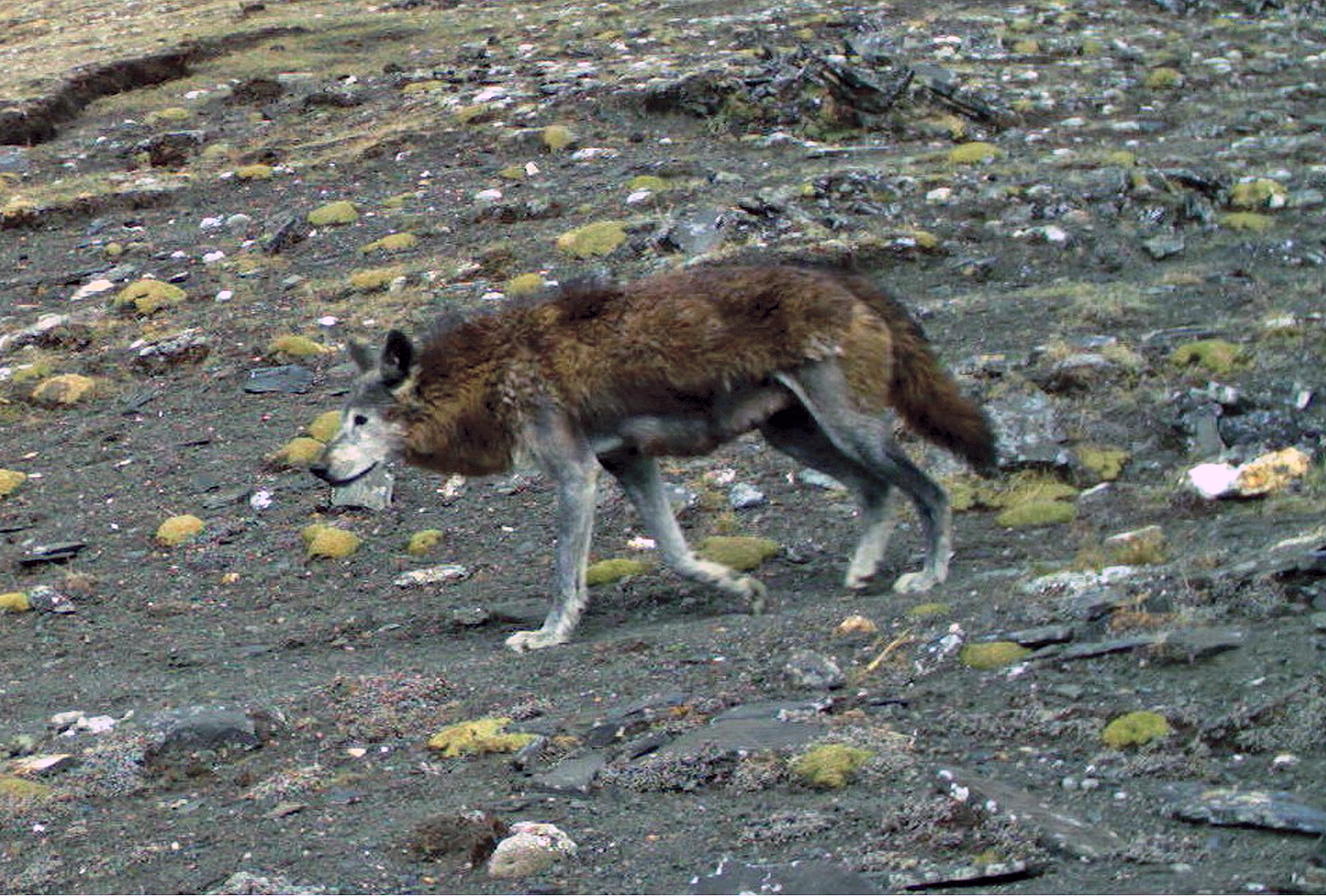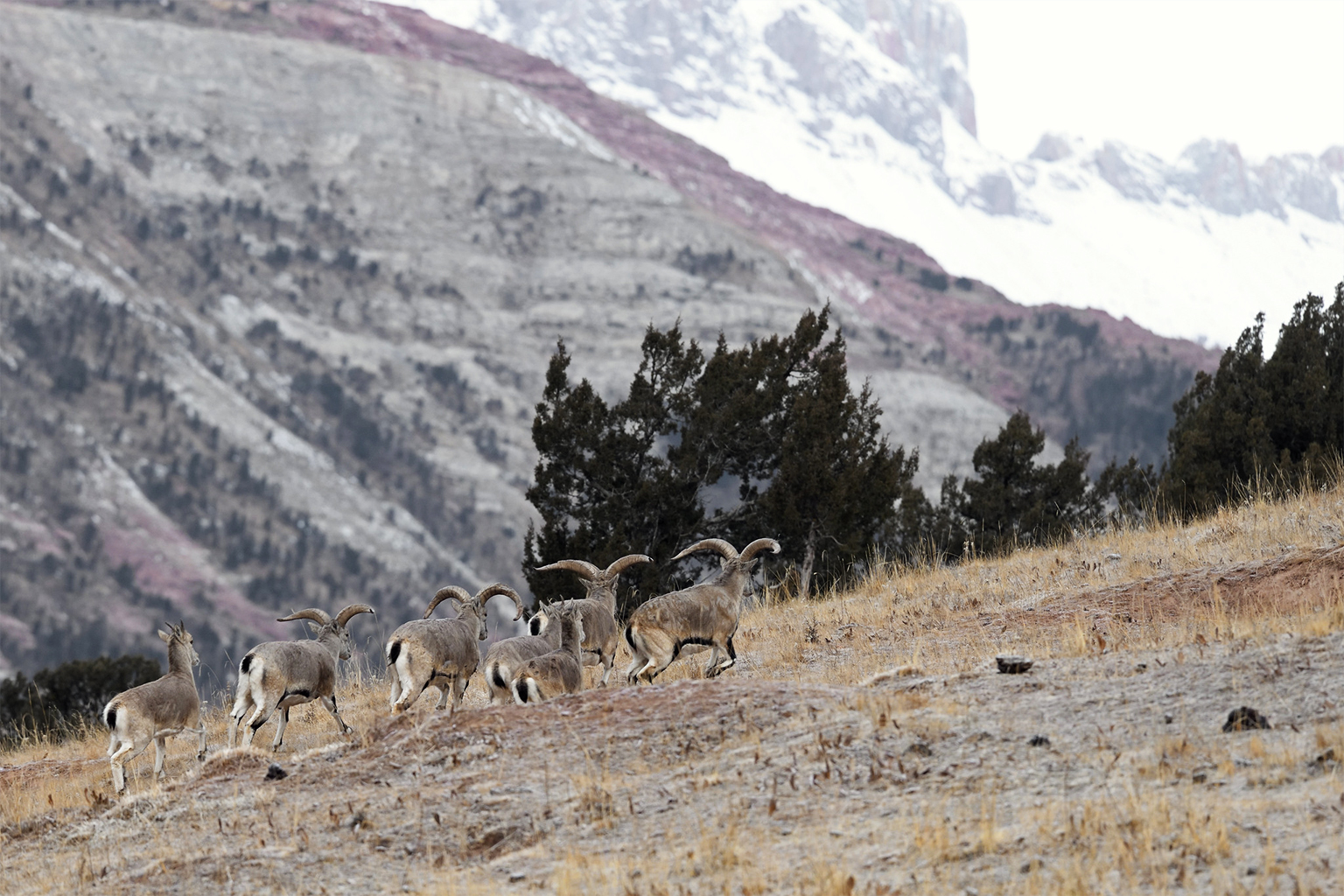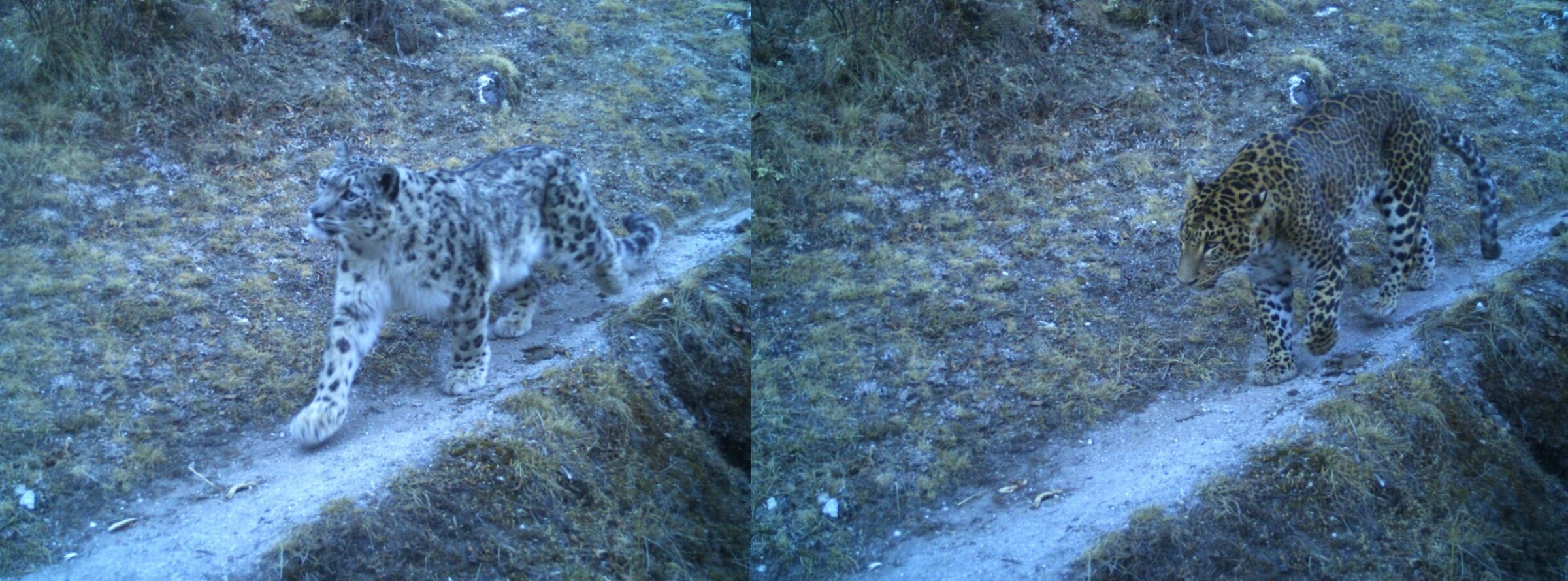
On the slopes of the Himalayas in Nepal, a primaeval scene plays out routinely, far from human eyes: a snow leopard lies in wait for its prey, its thick white-grey coat with large black rosettes serving as the perfect camouflage in this craggy terrain. When it senses the opportune moment, it pounces, aiming for the neck to immobilize the prey. For the next two to three days, it will feast on this single kill.
Until a few years ago, snow leopards, also known as the “ghosts of the mountains,” were believed to be the only surviving apex predator in this part of the world. But the vulnerable species, already facing pressure from common leopards and even tigers moving to higher altitudes, faces an old nemesis from the dog family that has returned to this region after decades.
“The Himalayan wolf had vanished from Nepal for over four decades when it started reappearing in different areas,” said researcher Bikram Shrestha. “People said they would kill or poison the wolves as they killed their livestock and even attacked humans.”
Return of the wolf

Unlike big cats, Himalayan wolves attack their prey in packs, using their social and cooperative skills to deadly effect. They rely on speed and endurance to chase and exhaust their prey, often over long distances. Wolf packs have even been known to bring down the mighty yak, one of the largest species of wild cattle in the world.
But they mostly go after smaller prey, and in the Himalayas, this means the naur, or blue sheep — which is also the main prey of the snow leopard. New research now shows that the wolves’ reemergence could already be impacting naur populations, and thus snow leopards in some areas of Nepal.
The researchers, led by Kamal Thapa from Tribhuvan University in Kathmandu, observed and collected data on the behaviour of naur in two different valleys, Manang and Nar Phu. The former is home to both snow leopards and wolves, while the latter has only snow leopards as the top predator.
They then watched the naur, using visual observations and GPS tracking, to see how they behaved when predators were around. They also counted how many naur there were, how big their groups were, and the ratio between males and females in both the spring and autumn seasons.
They found that the naur behaved differently depending on which predators were around. Those in Manang, where wolves were present, were twice as vigilant as the naur in Nar Phu, where there were no wolves.
“The snow leopard has been the resident apex predator for a long time, and the naur also know about its strategies,” Thapa said. “However, the wolf is new to the ecosystem, and as they don’t know how to deal with it, they need to remain in constant vigilance.”
Conservationists say snow leopards are already having to deal with the upward shift in habitat of common leopards and tigers. Snow leopards, because of their shy nature, size, and style of hunting, stand to lose the most as the wolves move in, they say.
“The wolf definitely adds more pressure to snow leopards as their presence will leave a big impact on the prey,” Shrestha said.
And it’s not just through direct competition for prey that the snow leopards could lose out, Thapa said.
“Our findings have implications for the conservation of snow leopards,” he said.
Naur find themselves most vulnerable when foraging, he said, and with the need for greater vigilance, they will have less energy to spend on feeding, which could leave them with a deficiency of nutrition.
“This could affect the long-term health and reproduction patterns of the prime food of snow leopards,” Thapa said.
Himalayan ecology at risk

The historical loss of wolves from Nepal’s Himalayas was due to the relative ease with which herders, aggrieved by the predation of their livestock, could track down and kill wolves in retaliation. Snow leopards largely evaded this threat, thanks to their elusive nature and camouflage skills. Global attention towards their conservation also helped boost their populations, researchers say.
In an ironic twist, the return of the wolves is likely also due to herders, many of whom buy domesticated yak from across the border in Tibet.
“There’s a theory that the wolves from Tibet followed the yaks to Nepal and recolonised the area,” Thapa said.
Shrestha said the conservation focus should now be on improving the prey population so that both snow leopards and wolves have enough to eat.
“We have had many snow leopard conservation projects in the mountains. But we now need prey-base conservation programs,” he said.
For the naur, this could give it the breathing room it needs to adapt to the growing presence of wolves.
“In the long-term, the naur will develop their own strategy to deal with the wolves,” Thapa said.
He noted that snow leopards prefer to attack on rugged terrain, while wolves prefer a flatter landscape. The naur may come to understand this and change its habitats slowly, Thapa said.
Researcher Madhu Chetri said that although he agrees with the principle findings of the study, the short distance between the two valleys could have affected the results as wolves have a large home range.
In any case, the re-emergence of wolves is likely to exacerbate human-wildlife conflict in the Himalayas — the very reason they were driven out of Nepal’s Himalayas to begin with.
“We need to ensure that people get timely compensation for losses caused by both snow leopards and wolves,” Thapa said.
This story first appeared on Mongabay and Onlinekhabar is republishing it under a Creative Commons licence.




















